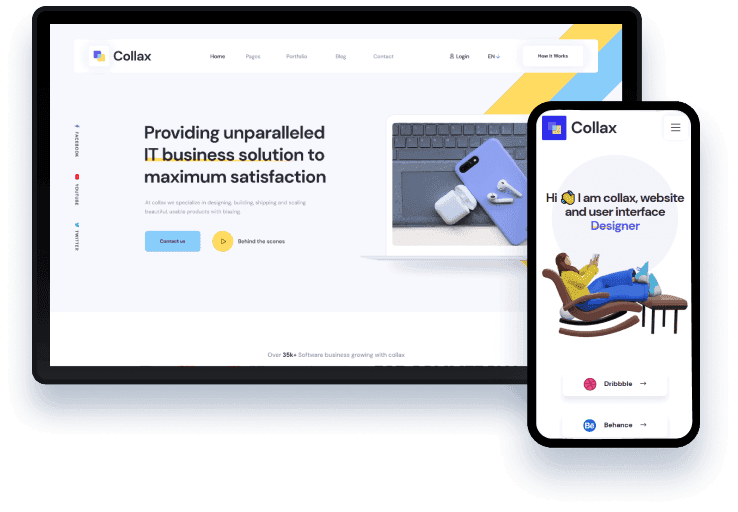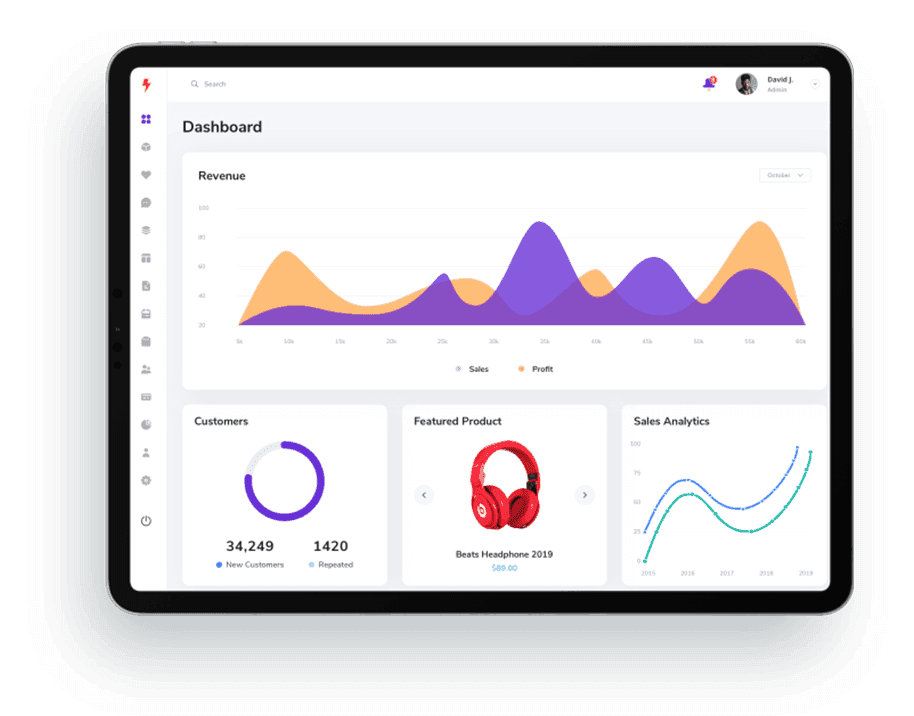UX Hyper-Personalization: Creating Tailored Digital Experiences
In today's digital-first era, personalization is the basis of excellent user experiences. As users connect with numerous digital platforms on a regular basis, they want experiences that are relevant, intuitive, and suited to their specific needs. This evolution has resulted in UX hyper-personalization—an advanced technique that uses data, artificial intelligence, and user behaviour insights to create personalised trips in real time. Unlike traditional personalisation, which focuses on fundamental preferences, hyper-personalization responds dynamically to each user's circumstances and activities, making digital experiences more meaningful, efficient, and emotionally engaging than ever before.
Why does hyper-personalization matter in modern UX?
Hyper-personalization in UX goes beyond simple segmentation and demographic design. It focuses on building experiences that adapt in real time to each user's specific behaviour, preferences, and context. Hyper-personalization, which combines data analytics, machine learning, and predictive modelling, allows digital interfaces to anticipate user requirements and give highly relevant content, features, and recommendations.
For example, an e-commerce platform may change product suggestions based on a user's browsing history or location, whereas a streaming app may curate content based on viewing habits and time of day.
Technology behind hyper-personalized UX
Advanced technologies that allow brands to understand, predict, and instantly adjust to the needs of each user form the basis of a hyper-personalized UX.
The role of AI, machine learning, and predictive analytics
Artificial intelligence (AI) and machine learning (ML) are the foundation of hyper-personalization. These technologies analyse huge volumes of user data—such as browsing behaviour, purchase history, and interaction patterns—to identify trends and predict future actions. Predictive analytics then utilises this data to anticipate user intent, allowing designers to provide personalized recommendations, data, and interfaces before users make a request.
Use of data-driven insights from user interactions
Every user interaction—whether a click, scroll, or time spent on a page—produces significant analytical data. By analysing these micro-interactions across multiple touchpoints, UX teams can find preferences and friction points. This continuous data flow enables digital platforms to dynamically adjust experiences, ensuring users receive the most relevant information and features at every stage of their journey.
Integration of CRM systems, cookies, and real-time analytics
Integrating Customer Relationship Management(CRM) systems, cookies, and real-time analytics enhances hyper-personalization by connecting user profiles across devices and experiences. When combined with real-time analytics, these tools provide a comprehensive view of the customer journey, allowing for immediate changes to design elements or content delivery.Key considerations for implementing hyper-personalization
While hyper-personalization offers significant potential to improve the user experience, it demands careful planning and ethical responsibility. Businesses must strike the right balance between personalization, privacy, and user convenience to maintain long-term trust and success.
Data protection and privacy
Data is the foundation of hyper-personalization, but it must be managed with transparency and trust. Personal information, such as behaviour patterns, interests, or location, must be collected and analysed in accordance with severe privacy requirements such as GDPR and CCPA. Brands should clearly describe how data is collected and used and give people control over their personal information. Implementing secure storage methods, encryption, and privatization guarantees that personalization efforts won't compromise data security or user trust.
Over-personalization
While personalization improves the user experience, too much can be disruptive or overwhelming. Over-personalization occurs when users feel constant monitoring or when recommendations become repetitive and overly specific. To avoid this, brands should prioritise meaningful relevance above excessive targeting. Designing flexible personalization models that adjust to user comfort levels enables companies to sustain engagement without breaking limits, resulting in experiences that seem really helpful rather than intrusive.
Also Read: Conversational UI: Are Chatbots the New Standard for Customer Care?Future of hyper-personalized UX
The future of hyper-personalized UX is based on the seamless integration of intelligent technologies that anticipate and adapt to human emotions, behaviour, and circumstance. As digital experiences evolve, the next phase of personalization will go beyond data-driven insights to provide experiences that are truly human and emotionally intuitive.
AI, AR/VR, and conversational interfaces will shape next-generation personalisation
Personalisation will be improved further by artificial intelligence using deeper learning models that interpret intent and emotion in real time. Augmented Reality (AR) and Virtual Reality (VR) will introduce immersive dimensions, enabling brands to create settings that adapt visually and interactively to individual preferences. Meanwhile, conversational interfaces like chatbots and voice assistants will evolve into understanding companions that can grasp tone, context, and sentiment and provide smooth, natural interactions.
Predictive UX and emotion-driven interfaces
The rise of predictive UX will allow systems to anticipate user demands before they are expressed, reducing friction and increasing engagement. Emotion-driven interfaces and behavioural detection will adjust images, tone, and content based on the user's emotional state. Together, these advancements will reshape digital design, changing interfaces into living ecosystems that respond, adapt, and connect with people on an extremely personal level.
Hyper-personalization v/s standard personalization| Category | Hyper-Personalization | Standard Personalization |
|---|---|---|
| Technology | AI, machine learning, predictive models, real-time engines | Basic CMS rules, segmentation |
| Data Used | Behaviour patterns, browsing data, intent signals, context, real-time interactions | Name, location, demographics |
| Conversion Potential | Significantly higher due to relevance and reduced friction | Limited |
| Privacy Concerns | Higher—requires strong data protection measures | Low |
Conclusion
Hyper-personalization is changing how users interact with digital platforms, transforming static experiences into dynamic, intelligent, and emotionally engaging journeys. Brands can move beyond one-size-fits-all designs by using technology such as artificial intelligence, machine learning, and real-time analytics to provide experiences that anticipate customer needs and change over time. As personalization advances, the line between human intuition and computer intelligence becomes more blurred, resulting in interactions that feel smooth, relevant, and authentic.
However, the future of hyper-personalized UX relies on striking a delicate balance between innovation, privacy , and empathy. When done appropriately, it not only increases pleasure and loyalty but also promotes a long-term emotional connection between people and companies. In essence, hyper-personalisation is not only the future of user experience but also the foundation of meaningful digital relationships.
At Tomsher Technologies , we help businesses in data-driven digital experiences that strengthen bonds and drive measurable results. Our team makes sure your online presence changes with your users, from AI-powered personalization to user-friendly UX design.
FAQ
1. Why is hyper-personalization needed for digital products?UX hyper-personalization refers to designing digital experiences that dynamically change based on real-time data, AI-driven insights, and individual user behaviour. It improves user satisfaction, engagement, conversions, and customer loyalty by making them feel understood and valued.
2. What are the examples of hyperpersonalized digital experiences?Dynamic homepages, personalised product ideas, adaptive interfaces, custom notifications, and content that adjusts to user intent.
3. Can hyper-personalization improve conversion rates?Yes, hyper-personalization may significantly boost conversion rates. Businesses may provide more relevant content and product recommendations by tailoring digital experiences to each individual user's behaviour, preferences, purchasing history, and intent.
By Digital Team. Updated on 18-11-2025
UX hyper-personalization personalized user experience digital personalization AI-driven UX
02-08-2025
Bulk Email: How Email Helps Ensure Delivery?
05-05-2025






